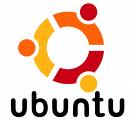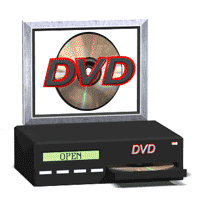Sponsored by BoysStuff.co.uk


Recently, I was charged with the task with editing and authoring a DVD. I recently upgraded my setup to Ubuntu Intrepid (64 bit). Supposedly, there would be at least modest speed gains when it came to encoding various video formats. So, I started off on my task, albeit with a new set of tools. Let's start of with an inventory of resources, and then go through the actual process for making a DVD.
For capture, I used the most standard, stable solution: Kino. There is one issue when capturing video over Firewire(IEEE 1394) in Kino: It has to be run as su. Open up a terminal, type "sudo kino", enter your password, and you will have no troubles. If you are editing in another program, I recommend capturing your video as a single file. To do so, you will have to turn off "auto split". This automatically determines when the camera cuts off, and then chops up the video into separate DV files. For an hour of footage, this will often be 70-100 individual clips to keep up with. To keep this from happening, go to "Edit > Preferences"(shortcut CTRL + P) under the Kino main menu, click the "Capture" tab, and uncheck "Auto Split Files". This will make the video much more manageable.
Normally, my editing/encoding setup consists of a Cinelerra installation(the best configurations are those contained in the Akirad repositories). I used it for editing, titling and most of my FX work. It has worked flawlessly for me, however, it has a few hangups. The interface is really rough, and the learning curve is high. Keyframes and motion paths are a pain to work with. It's rendering is incredible, and it has no issues with font aliasing after rendering. It was the only program I could get to work on a consistent basis with Linux.
That all changed with the release of Kdenlive 0.7.2. Earlier versions of Kdenlive were buggy, unpolished, and crash prone. If you saved your work every 15 seconds, it still wouldn't be enough. The new version is incredible. Not only have stability issues been taken care of, but they have added some incredible realtime FX, a stellar editing experience, and given the user interface a much-needed overhaul. The editing experience is closer to mainstream programs like iMovie and Final Cut Pro. There is only one drawback, at least on my version of Kdenlive: Font aliasing in titles. While it handles the the video editing like a pro, the rendering of titles(at least in 0.7.2) is a disappointment, giving you jagged, unreadable lettering as rendered product. Because of this issue, I was forced to do titling in Cinelerra.
After I finished editing my files, I rendered it as a RAW DV file. While this was quite large, it also gave me an excellent starting point for putting the titles on DVD. I had two options for this process, but one was vastly better than the other. In reading the Linux forums, their were two options that gained my trust: tovid gui and devede.
The main differences between them is stability, and what can be done with the DVD after you finish encoding it. ToVid's GUI allows you to specify background and play buttons, along with a menu tree. The output is rather crude, and the options are limited. The main drawback was an inability to customize encoding quality. Even with the script settings being locked down, it still had a hard time rendering properly. Of the 3 times I tried to use it, only 2 resulted in a successful encoding. It also adds the burning process as one of the "features". I was routinely met with botched burns and buffer underruns. Don't use ToVid's GUI unless you absolutely have to.
DeVeDe offers you a better user experience. Previews of your menu title are available. You can do a 60 second render to make sure your video and audio will not suffer if quality is adjusted. Yes, it actually allows you to adjust the quality of the render, and gives you an estimate of disk space that will be taken up after conversion to MPEG-2. If you want something like a looping video clip and music for your disc menu, it offers access to this as well, without causing you substantial mental anguish. For me, the best parts are the many rendering options. DeVeDe allows you to render just the disc structure, the mpeg files, or combine them into a disc ISO. You can even flag the rendering process to take advantage of optimization for multi-core processors. They don't try to integrate burning into their options, as there are many fine programs that have designed to do exactly that. This shows the wisdom of the development team. Once the ISO is ready, you just have to select the burning program that you would like to use. One cautionary issue with DeVeDe: It defaults to PAL(European 25 FPS format). North American users will need to set the encode format to NTSC under the video and main menus before encoding takes place. A failure to set keep the format the same between menus will result in a botched encoding.
I present the ultimate burning solution: K3B. I love it. This can burn every type of disc imaginable. Its management of hardware and software buffers is incredible, and quite frankly, it just works. The only botched disk I had while using this as my burning program was my own fault (I had a microscopic amount of peanut butter on my thumb when I picked up the disk, and it caused the laser to scatter on the DVD surface). K3B even plays a bugle call to let you know the burn was successful. Even though Brasero comes standard on my installation of Intrepid, it still managed to drop the ball. Use K3B and reclaim your wasted time.
After you are done burning, be sure to test your disk in different types of players. Be sure to test it in a standard DVD player for your region, and not just in your computer's DVD player. It needs to be tested against hardware based codecs. As an extra step, you may want to test on a Blu-Ray player, just to make sure it runs/scales properly.
Hopefully this overview will put you on the path to the stable encoding and burning of your next project. I have to leave you now, as six hours of raw footage await me. God bless and success to you.

| © RIYAN Productions |

